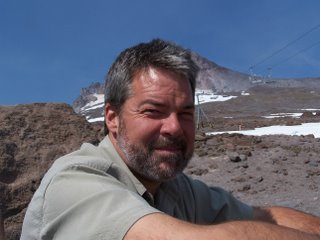James L. Patton | Distinguished Teaching Award: 1991 |
Integrative Biology | Statement written: 1991 |
The undergraduate and graduate students who attend the University of California at Berkeley are among the very best that this country (or any other) has to offer. The challenge to the teacher, therefore, is the dual one of (1) capitalizing on that intelligence so that individuals can learn to think critically and openly and (2) providing them with sufficient factual information so that they can discuss ideas and concepts creatively. Bright people are not as easily satisfied with the status quo and, because learning comes relatively easily to them, they need to be stimulated to learn to their capacities.
The single word that underscores my teaching philosophy is commitment—commitment to each student as an individual, commitment to provide the most invigorating educational environment possible, and to recognize the variance in their individual capabilities and interests. I give formal lecture-laboratory courses, but I teach through personal contact, by interacting with all students as the individuals they are, and by communicating with them at a level and intensity that seem optimal for their development. I design my courses, as well as my participation in them, to maximize one-on-one or small-group interactions. But I am not simply a classroom teacher; I maintain a very active research program and I supervise Ph.D. and postdoctoral students and undergraduates working on honors theses. I consider research and teaching closely intertwined in a most positive way.
Knowledge in biology is accrued at a very rapid rate, and biology as a subject is accretionary. The art in teaching biology is to excite students with that which is current, while giving them the temporal depth to appreciate how and why the field is at a particular point today. It is not easy to do this when the subject matter increases at an exponential rate, but the time devoted to lectures, for example, remains static. I try to achieve this balance by combining lecture materials with assigned and suggested readings from the primary literature, including those that provide the historical basis for a discovery, a controversy, or a viewpoint coupled with those that provide the most up-to-date reviews. I make notes following many lectures about the perceived success (or failure) in my delivery of particular topics, and change the contents, the approach, or both when discussing the same topic in the subsequent year.
Because I interact closely with all students throughout the semester, teaching takes on the informality of continual discussions rather than being restricted by the boundaries of the lecture classroom. My goal is to make all students completely at ease in my presence, so that they are unafraid to open their minds or to ask the most fundamental questions, and so to push themselves to their own limits and beyond. My commitment to each course is total, and all my interactions with individual students are extremely rewarding. Indeed, it is because of the possibility of such interactions that I have remained a faculty member at Berkeley.

No comments:
Post a Comment